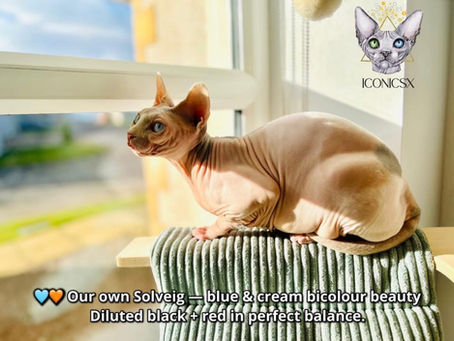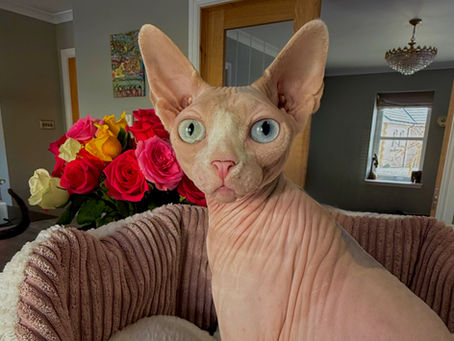top of page


GENES DON’T LIE - Dilution Gene — When Colours Go Soft
Not every pastel is what it seems. And not every blue is actually… blue. There’s a little gene (we call it dilution - “d”) that changes the way colour shows up in a cat’s coat — or skin, if you live with a Sphynx. It doesn’t wipe out the pigment; it just spreads it differently. Think of it like mixing paint with water. The colour’s still there, just softer. But here’s the catch: That only happens if the cat gets two copies of the gene (d/d) — one from each parent. Just one?
Iconicsx
Oct 202 min read


GENES DON’T LIE - White Spotted Gene — How Much White Is Too Much White?
You’ve probably seen them — those dreamy white-and-colour cats with just a splash of black on the head, or a tail like it was dipped in paint. They’re called van or harlequin, and their colouring comes from a gene called white spotting — or ws for short. But here’s the twist: Not every cat with this gene looks the same. Some have just cute little socks or a white belly…Others are almost completely white — and yet they don’t carry the gene for dominant white (w) at all. So wha
Iconicsx
Oct 203 min read


GENES DON’T LIE — White Isn’t Just a Colour.
Imagine this: You’ve got a full painting underneath — rich colours, perfect patterns, a story written in genes. Black, blue, tortie…maybe even a classic tabby. But then? Someone pulls a pure white curtain over the whole canvas. And just like that — poof. It’s all gone. That’s what the white gene (symbol: W) does. It’s not really a colour gene in the traditional sense. It’s more like a genetic blackout. Let’s talk about it. What does it do? Just one copy (w/W) is enough to tur
Iconicsx
Oct 202 min read


GENES DON’T LIE : Dominant or Recessive Genes? It Makes All the Difference.
Every cat is a walking story. But that story doesn’t begin with their first breath, or with the first cry in the nest box. It begins earlier — quietly — in the places we can’t see. In the double helix. In the script written long before we even knew their name. Each kitten carries two copies of every gene. One from the mother, one from the father. Sometimes, those genes agree. And sometimes… they don’t. When that happens, one must speak louder. That’s when we meet two fundame
Iconicsx
Oct 202 min read


GENES DON’T LIE - Chimera Cat
Chimera cats. People throw that word around too much. Have you seen a cat with a split face and odd eyes advertised as „Chimera”? Most of the time, it’s not. A chimera cat isn’t about looks – it’s about DNA. This phenomenon occurs when, at a very early stage of embryo development, two separate embryos fuse together to become one body. As a result, a cat is made up of two different genetic sets. It depends on what fused: XX/XX – Two female embryos → Female cat, quite often
Iconicsx
Oct 202 min read
bottom of page


